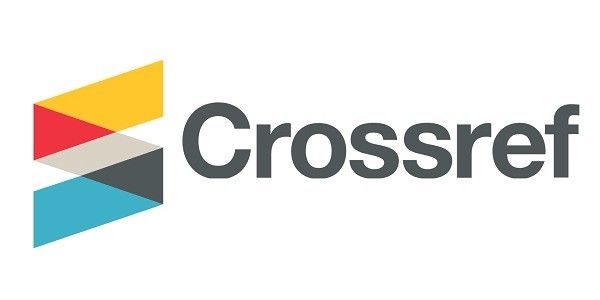Abstract
This paper argues for the critical role of collective drawings as a form of representation that highlights the open process. The open process of collective drawing involves actions performed by multiple actors and actions that are not limited to producing drawings together but also require the expression of ideas. Collective drawing encourages negotiations among fragments of the drawing, which opens up various possibilities of representations within the interiority discourse. Exquisite corpse drawings made by Surrealist artists occupy an influential position as drawings produced via an open process regulated by the internal mechanism, manifesting as a continuous act of drawing. This study on exquisite corpse drawings is conducted by dissecting the drawing fragments and examining how the head–torso–feet relationship is negotiated within them. The study reveals that layers of negotiation among fragments represent how the collective act of drawing works. This finding contributes to expanding the internal logic and system of a collective drawing process, allowing diverse interpretations and articulation of the representation works.
Publication Date
1-29-2025
References
Adamowicz, E. (2005). Surrealist collage in text and image: Dissecting the exquisite corpse. Cambridge University Press.
Bryson, N. (2003). A walk for walk's sake. In C. de Zegher (Ed.), The stage of drawing: Gesture and act. The Drawing Center.
Cantley, B. (2013). Two sides of the page: The antifact and the artefact. Architectural Design, 83(5), 36–43. https://doi.org/10.1002/ad.1660
Charitonidou, M. (2023). Architectural drawings as investigating devices: Architecture's changing scope in the 20th century. Routledge.
Evans, R. (1984). In front of lines that leave nothing behind. Chamber Works. AA Files, 6, 89–96. http://www.jstor.org/stable/29543404
Feast, L. (2012). Professional perspectives on collaborative design work. CoDesign, 8(4), 215–230. https://doi.org/10.1080/15710882.2012.734828
Fernández Contreras, J. (2022). Annotation as review: Graphic thinking in Enric Miralles' Ph.D. Thesis. Architecture and Culture, 10(2), 272–283. https://doi.org/10.1080/20507828.2021.1946746
Goodbun, J., & Cunningham, D. (2005). On surrealism and architecture (with some stylistic apologies to André Breton). Architectural Design, 75(2), 66–69. https://doi.org/10.1002/ad.49
Hamilton, O. (2018). Commoning interior design pedagogy. Interiors, 9(2), 122–139. https://doi.org/10.1080/20419112.2019.1565678
Ingold, T. (1983). The architect and the bee: Reflections on the work of animals and men. Man, 18(1), 1–20. https://doi.org/10.2307/2801762
Ingold, T. (2010). Drawing together: Materials, gestures, lines. In T. Otto & N. Bubandt (Eds.), Experiments in holism: Theory and practice in contemporary anthropology (pp. 299–313). Wiley-Blackwell.
Jamieson, C. (2014). NATØ: Exploring architecture as a narrative medium in postmodern London [Doctoral dissertation, Royal College of Art]. https://researchonline.rca.ac.uk/1683/1/JAMIESON%2C%20Claire%20Thesis%20%28REDACTED%20VERSION%29.pdf
Kochhar-Lindgren, K. (2002). Towards a communal body of art: The exquisite corpse and Augusto Boal's theatre. Angelaki, 7(1), 217–226. https://doi.org/10.1080/09697250220142137
Kochhar-Lindgren, K., Schneiderman, D., & Denlinger, T. (Eds.). (2009). The exquisite corpse: Chance and collaboration in surrealism's parlor game. University of Nebraska Press.
Koolhaas, R., & Mau, B. (1995). S, M, L, XL: Small, medium, large, extra large (J. Sigler, Ed.). 010 Publishers.
Kulper, P. (2018). Silver parrots: Mischievous characters and feathered aerialists. Architectural Design, 88(2), 84–91. https://doi.org/10.1002/ad.2284
La Marche, J. (2014). Surrealism's unexplored possibilities in architecture. In T. Mical (Ed.), Surrealism and architecture. Taylor and Francis.
Laxton, S. (2009). This is not a drawing. In K. Kochhar-Lindgren, D. Schneiderman, & T. Denlinger (Eds.), The exquisite corpse: Chance and collaboration in surrealism's parlor game (pp. 29–48). University of Nebraska Press.
Lucas, R. (2019). Drawing parallels: Knowledge production in axonometric, isometric and oblique drawings. Routledge.
Manolopoulou, Y. (2013). Architectures of chance. Ashgate Publishing Company.
McDonnell, J. (2009). Collaborative negotiation in design: A study of design conversations between architect and building users. CoDesign, 5(1), 35–50. https://doi.org/10.1080/15710880802492862
Meyers, L. (2020). Exquisite corpse. Art Journal, 79(1), 16–17. https://doi.org/10.1080/00043249.2020.1724030
Mical, T. (Ed.). (2014). Surrealism and architecture. Taylor and Francis.
Murray, S. (2018). Surrealist Thames‐side piers Tellurian relics. Architectural Design, 88(2), 78–83. https://doi.org/10.1002/ad.2283
Ostwald, M. J., & Chapman, M. (2006). Privileging the sketch: Coop Himmelblau, nonlinear dynamics and the psychogram. Design Research Society.
Ostwald, M. J., & Chapman, M. (2009). Psychic automatism and nonlinear dynamics: Surrealism and science in the architecture of Coop Himmelblau. The Radical Designist: A Design Culture Journal, 3, 1–12. http://unidcom.iade.pt/radicaldesignist/wp-content/uploads/2015/07/003_06.pdf
Pethő, Á. (2022). The exquisite corpse of history. Radu Jude and the intermedial collage. Acta Universitatis Sapientiae, Film and Media Studies, 21(1), 36–100. https://sciendo.com/article/10.2478/ausfm-2022-0003
Plevoets, B. (2022). The fragmented interior: Decomposition of the interior of the Generale Bank and its afterlife. Interiors, 12(1), 100–122. https://doi.org/10.1080/20419112.2022.2051870
Rahim, A. (2010). Interiorities. Architectural Design, 80(2), 24–31. https://doi.org/10.1002/ad.1038
Ross, M. E. (2003). Salvador Dalí and the surrealists: Their lives and ideas, 21 activities. Chicago Review Press.
Rossi, A. (1984). The architecture of the city. MIT Press.
Scheer, D. R. (2014). The death of drawing: Architecture in the age of simulation. Routledge.
Shields, J. A. E. (2024). Collage and architecture (2nd ed.). Routledge.
Spankie, R. (2009). Basics interior architecture 03: Drawing out the interior. AVA Publishing SA.
Spiller, N. (2018a). Magic craftsmanship: A glimpse into Bryan Cantley's thirdspace. Architectural Design, 88(2), 92–97. https://doi.org/10.1002/ad.2285
Spiller, N. (2018b). That was then, this is now and next. Architectural Design, 88(2), 6–15. https://doi.org/10.1002/ad.2273
Van Alphen, E. (2012). Looking at drawing: Theoretical distinctions and their usefulness. In S. Garner (Ed.), Writing on drawing: Essays on drawing practice and research (pp. 59–70). Intellect.
Venturi, R. (1977). Complexity and contradiction in architecture (2nd ed.). The Museum of Modern Art.
Vesely, D. (2004). Architecture in the age of divided representation: The question of creativity in the shadow of production. MIT Press.
Vesely, D., Stara, A., & Carl, P. (2022). Surrealism and the latent world of creativity. In D. Vesely, A. Stara, & P. Carl, The latent world of architecture (pp. 217–232). Routledge. https://doi.org/10.4324/9781003272090-11
Vidler, A. (2018). Architecture after the rain. Architectural Design, 88(2), 16–23. https://doi.org/10.1002/ad.2274
Weir, S., O'Connor, D. W., Watt, R., Reinhardt, D., Fernando, S., & Dibbs, J. (2018). Design and fabrication of a ruled surface vault with the Exquisite Corpse. Nexus Network Journal, 20, 723–740. https://doi.org/10.1007/s00004-018-0385-9
Wolf, W. (2003). Narrative and narrativity: A narratological reconceptualization and its applicability to the visual arts. Word & Image, 19(3), 180–197. https://doi.org/10.1080/02666286.2003.10406232
Submitted Date
2024-09-11
Accepted Date
2024-12-23
First Page
103
Last Page
124
Recommended Citation
Ardianta, D. A., Yatmo, Y. A., & Atmodiwirjo, P. (2025). Fragments Within Fragments: The Collective Negotiation of Exquisite Corpse Drawings. Interiority, 8 (1), 103-124. https://doi.org/10.7454/in.v8i1.1128
Creative Commons License

This work is licensed under a Creative Commons Attribution-NonCommercial 4.0 International License
Author(s) retain the copyright of articles published in this journal, with first publication rights granted to Interiority.






